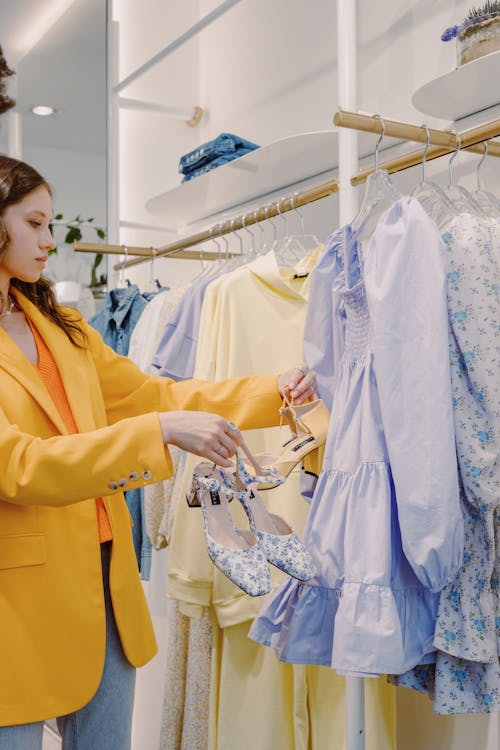- 1. How much is this?
- 1. 이거 얼마예요?
- 2. Is there a different size?
- 2. 사이즈 다른 거 있나요?
- 3. Could you give me a discount?
- 3. 깎아 주실 수 있어요?
Main Activity:
1. Half of the students will be customers and the other half will be sellers.
학생들의 반은 손님이 되고 나머지 반은 판매자가 됩니다.
- What products are popular in Korea?
- 한국에서 인기가 많은 물건은 뭔가요?
2. The customer will receive a shopping list.
손님은 쇼핑 리스트를 받습니다.
3. They will go to the appropriate seller and ask whether the seller has the item they are looking for.
손님은 적절한 판매자에게 가서 판매자가 자신이 찾는 물건을 가지고 있는지 물어봅니다.
- Do you sell socks?
- 양말 팔아요?
4. The seller will answer whether they have the product or not.
판매자는 자신이 그 물건을 갖고있는지 아닌지 대답합니다.
5. If the seller does have the item, the customer will ask how much the item is.
판매자가 물건을 가지고 있다면, 손님은 물건의 가격을 물어봅니다.
- How much are the socks? Could you give me a discount?
- 양말 얼마예요? 가격 깎아 주실 수 있어요?
6. The seller will tell the customer the price and the customer will decide whether they still want the item after looking at the product and finding out the price.
판매자는 손님에게 가격을 말해주고 손님은 가격을 알아본 후 살지 안살지 결정합니다.
7. Students will repeat steps 5-6 until they bought or sold all of their products.
학생들은 모든 제품을 사고 팔 때까지 스텝5와 스텝6를 반복합니다.
Wrap-Up:
Discuss the following question to finish the lab(이 질문으로 랩을 마무리하세요):
- What do you want to buy when you go to Korea?
- 한국에 가면 무엇을 사고 싶어요?
End of activity:
- Read Can-Do statements once more and have students evaluate their confidence.
- (Use thumbs up/thumbs down or download our student cards.)
- Encourage students to be honest in their self-evaluation.
- Pay attention, and try to use feedback for future labs


